SERVICE NAME: Weed Control Treatments
TYPICAL COST: $40 and up
SERVICE AREA: Full service area
FREQUENCY: Varies
TIMING: Spring to Fall
COMMON ADD-ONS: Mosquito Control & Grub Control
BENEFITS: Healthier, flusher, greener lawn
SERVICE NAME: Weed Control Treatments
TYPICAL COST: $40 and up
SERVICE AREA: Full service area
FREQUENCY: Varies
TIMING: Spring to Fall
COMMON ADD-ONS: Mosquito Control & Grub Control
BENEFITS: Healthier, flusher, greener lawn
Maybe you learned in school that weeds are plants specially adapted to strangling out and stealing resources from other plants, and this is true for the most part, but as lawn care goes if anything is somewhere you don’t want it to be, it’s a weed. A patch of tall fescue growing in your bluegrass turf? Thats a weed. An outbreak of crabgrass on a troublesome part of your turf? Thats a weed.
The most obvious answer to this question is that you probably want to, if you’re managing a turf, the point is to maintain a pristine looking lawn and weeds are the agents of chaos in this world of order. There are reasons beyond this however as many plants that are primary weed culprits can be damaging to your turf either way. Life at it’s basest form is a zero-sum game, a competition for resources and for every weed in your lawn that’s an extra plant taking resources from your turf, and as previously stated, many weeds are quite adept at maximizing their resource acquisition at your lawns expense.
Chicagoland is a lush area full of many kinds of plant life, and the more plants there are, the more they need to compete, and some of them are very good at it. There are several types of weeds and control methods for them all. Like with Insect control, the point is not eradication, as that will be impossible, but they can be contained and maintained. The primary weeds you may encounter in the Wheaton area are:
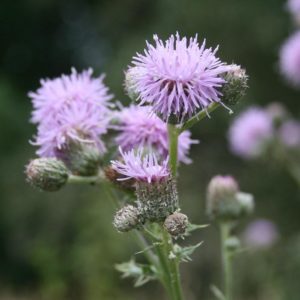
Canada thistle is a tough weed with creeping roots that extend long and deep away from the plant. They can grow very large as well making them quite the sight to behold. This nightmare weed is the bane of lawn maintenance everywhere, which is why it should be killed before it can proliferate, it’s not uncommon to see an entire turf replaced because of this weed.
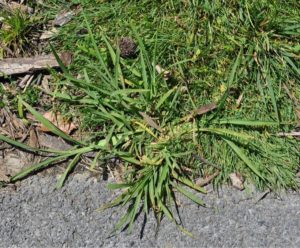
Crabgrass is a warm season annual weed that invades lawns that are thin, weak and undernourished. It germinates in late spring once soil temperatures have reached 50 degrees fahrenheit. While it grows it develops into a ground-hugging weed that spreads over the surrounding turf, suffocating the grass and other plants it can cover. In late summer this pest produces hundreds of seeds that will sprout the following year. Crabgrass seeds can remain in the soil for many years and sprout when the conditions are right, so it’s best to get this weed before it can do that.
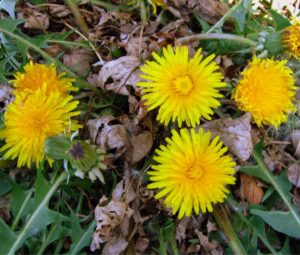
Dandelions are the bane of many turfs. Thriving in thin, sparse turf, dandelion seeds float through the air looking for any opening in your to propagate. Meanwhile, below ground, they develop a long taproot. This taproot is thick, brittle, and easily fractures, but any piece of the taproot that remains in the ground will re-grow, as such like all of the other weeds on this list it’s best to get this one before it can mature.
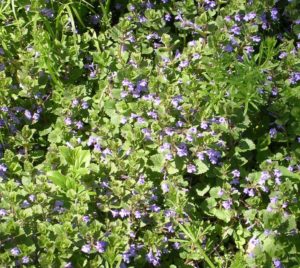
Ground Ivy, otherwise known as Creeping Charlie, is a very aggressive lawn weed that is hard to reign in when established on your turf. It has low growing, creeping stems that form new plants at what we call “nodes”. The creeping, spreading, invasive nature of this weed, along with its preference for shady places makes it very competitive on your turf, and therefore very difficult to maintain, it’s recommended to prevent this weed before it gets a foothold.

Wild Violets are a very shade tolerant weed that prefers moist, fertile soils. Violets tend to show themselves during the cool weather of spring and fall. All violets reproduce by seed, but violets also spread by creeping roots and rhizomes like some species of ivy. This weed can be troublesome to deal with, but thankfully is not as bad as some of the others here.
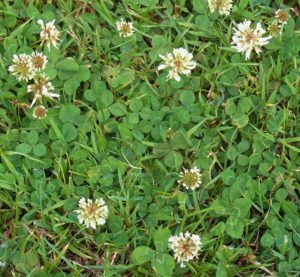
White Clover also known as Dutch Clover is a cool-season perennial that is native to Europe and Asia. Low growing, it forms creeping stems (stolons) that produce roots and shoots along its stem. Being in the legume family, it fixes nitrogen into the soil which enables it to thrive in unfertilized areas.